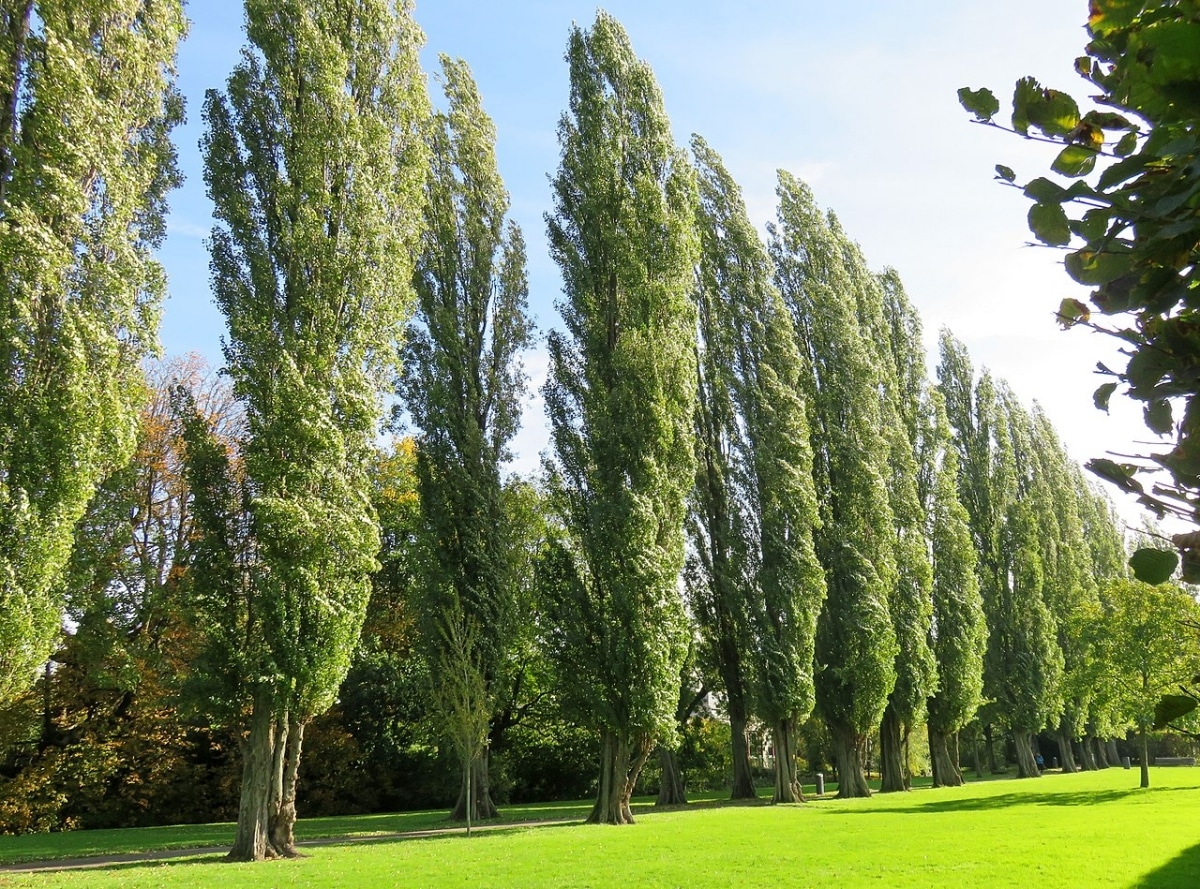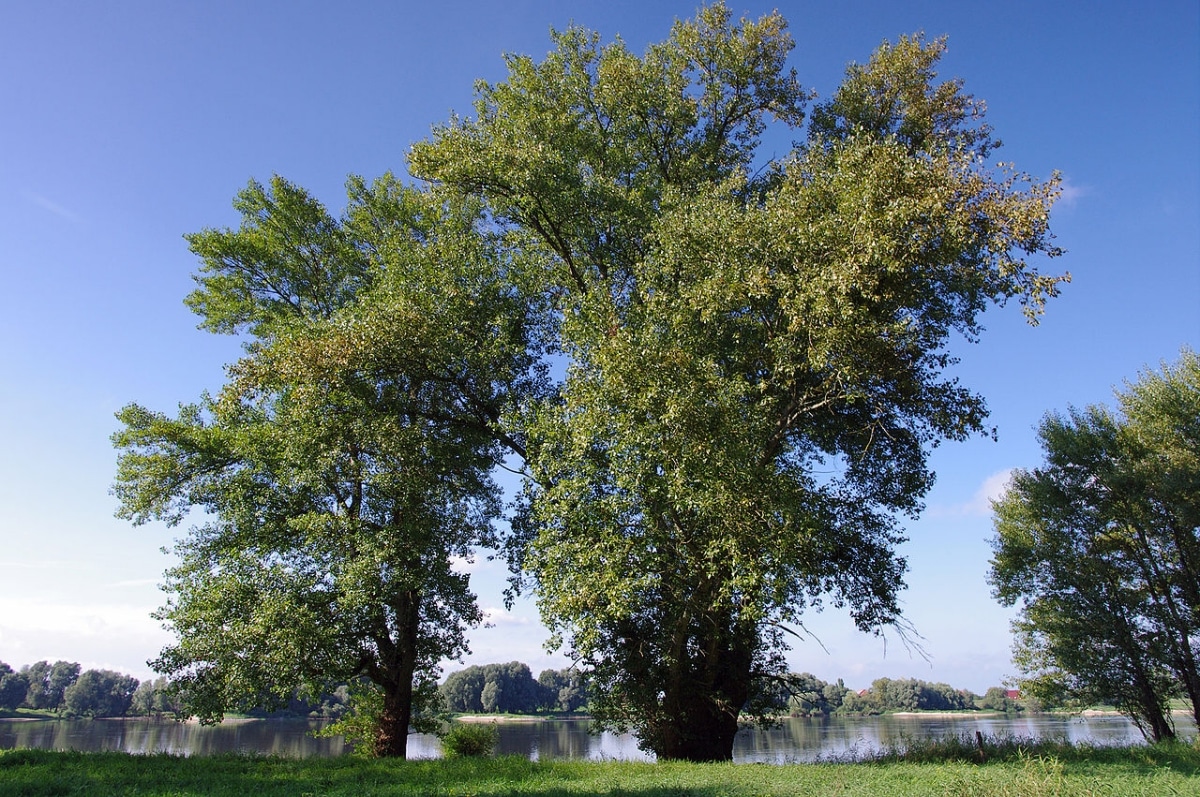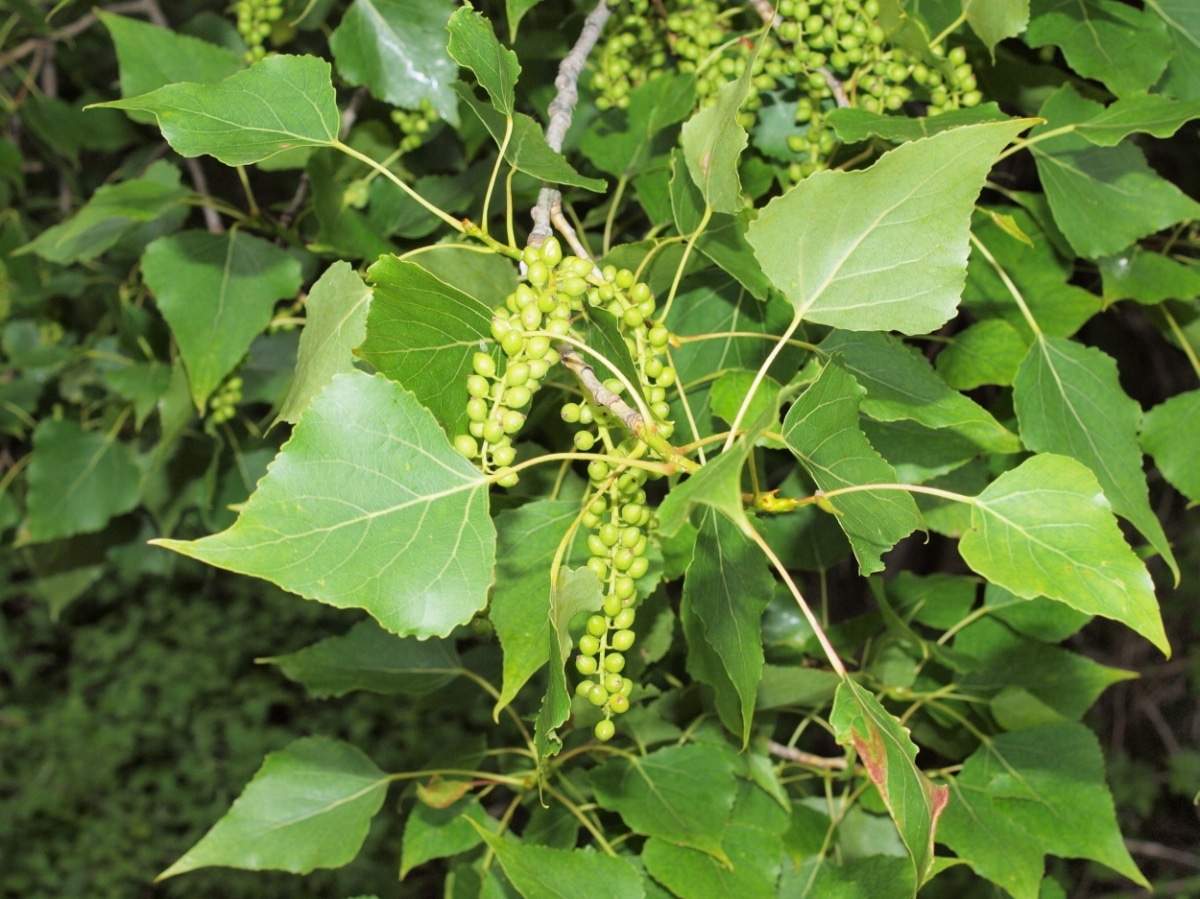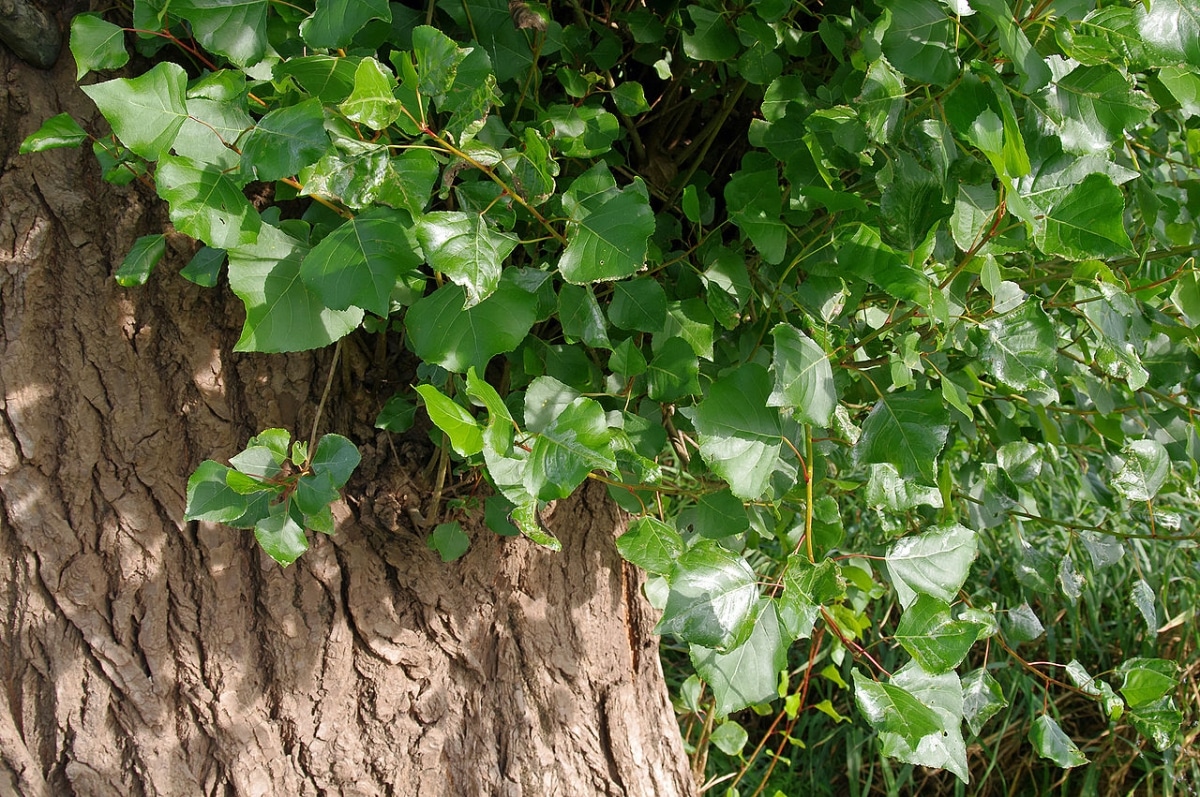
Image – Wikimedia/WeeJeeVee // Populus nigra 'Italica'
El black people it is a tree that can be seen a lot in gardens that enjoy a temperate climate. It's elegant, grows very fast, and can be planted in soils that are almost always moist (but not waterlogged).
Although it has a thick trunk, there are cultivars such as 'Italica' that can be used, for example, as a windbreak hedge in medium-sized gardens, or as an isolated specimen in small ones.
How is the black poplar?

Image - Wikimedia / Christian Fischer
It is a large deciduous tree, which can reach 30 meters in height., and which has very strong and deep main roots, as well as other secondary ones that grow closer to the surface of the soil. The trunk is straight and has gray bark that cracks from an early age.
The crown is made up of branches that grow upright, from which green leaves sprout on both sides, with an ovate shape and serrated margins. During the fall, when the weather begins to cool, the foliage turns a deep yellow-orange color.
In the northern hemisphere blooms between February and March, that is, towards the middle of winter and until the beginning of spring. Its flowers are catkins that sprout before the leaves do. and the fruits are capsules inside which we find brown seeds wrapped in white fluff.
His scientific name is black people, although it is better known as black poplar or black poplar. It is native to much of Europe, except Spain, Ireland and Scotland. However, cultivated in a garden it is possible to find it in any country that has a temperate climate, with mild summers and cold winters with snowfall. Even in Argentina and Chile it is known that there is a variety, the P. nigra var italica, which since it has been cultivated since colonial times is known as Chilean poplar.
What is?
The black poplar has several uses, which are:
- Ornamental: Whether as an isolated specimen or in rows, it is a very grateful tree that looks perfect in large gardens.
- Wood: It is used in carpentry to make furniture and accessories that do not have to support a lot of weight, since it is light and can break easily.
- Medicinal: It is used to tone, and to treat colds, wounds and ulcers.
How to take care of black people?

Image - Flickr / HermannFalkner / sokol
It is a tree that will look very nice on the lot, but only if it has its basic needs covered. It is not demanding, but that does not mean that it can be put anywhere. In fact, if, for example, it is planted a few meters from a pipe, it is most likely that it will end up damaging them. Therefore, we are going to see how to take care of it so that problems do not arise:
Climate
The climate has to be tempered, with moderate or abundant rainfall. It is a tree that suffers a lot from extreme heat and even more so if it occurs during periods of drought. That is why it is difficult to see it in places where it rains little, since in these it becomes a demanding plant.
Location
It is best to plant it in the ground, in full sun, as soon as possible.. It's the only way to get your trunk to grow straight from the start, and for your leaves to get used to the sun's rays soon. And it is that if it is kept in the shade, it will grow towards the most powerful light source, and in doing so it will lose strength, because its stem will become thinner and more tender.
Earth
It adapts to almost any type of soil, although it is preferable to plant it in one that is rich, fresh and has good drainage. It is possible to have it in the lawn, as long as it is planted at least ten meters away from the pipes.
For seedbeds and while the tree is kept in a pot, universal plant soil can be used, such as this.
Irrigation
the black poplar needs frequent watering if it doesn't rain. As we said, it is not a plant that can withstand drought, so we must ensure that it does not lack water, watering it if necessary about 4 times a week during the summer, and 1-2 a week during the other seasons.
Subscriber
If you wish, you can pay it in spring and summer with fertilizers such as compost, mulch or guano (for sale here). In this way you will get it to grow faster and better.
Plagues and diseases
Starting with pests, the most worrying are: the poplar borer caterpillar, the poplar borer weevil, and the woolly aphid.
And as for the enfermedades, bacterial canker, poplar blight and spring defoliation are the ones that can have the most.
Multiplication
El black people multiplies by seeds, which are planted in pots with universal soil; or by cuttings, cutting a piece 20-30 centimeters long by 2 centimeters thick, and then plant it in a container with substrate.
Rusticity
Withstands frost up to -18 ° C.

Image - Wikimedia / Christian Fischer
What dou you think about him black people?